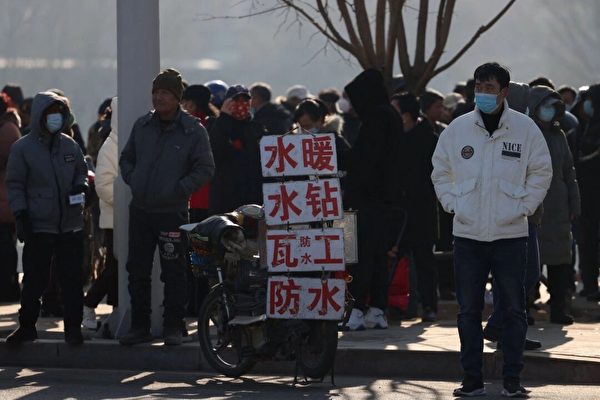According to the poverty line set by the World Bank based in Washington, D.C., more than 40% of the population in China lives in extreme poverty, while 80% of the population is considered poor.
The Chinese Communist Party has been boasting about its myth of lifting 800 million people out of poverty to legitimize its rule. However, the reality is that through strict control over the economy and society, a significant portion of the population continues to live in poverty. The Great Famine triggered by the People’s Commune canteens in 1959 is a typical case, leading to an estimated death toll of up to 30 million people, although the actual number of deaths may be higher. It was not until 1978 when Deng Xiaoping started implementing a market economy nationwide that Chinese citizens began earning more money, and the middle class eventually emerged. Nevertheless, the overall economic level of the people remained quite low. In the United States, adjusting for inflation, the per capita real GDP in 1900 was $4,000, a figure that China did not surpass until 2010.
Today, according to data from the International Monetary Fund (IMF) based in Washington, D.C., the per capita GDP in the United States is $85,300, while in China, it is only $13,100, ranking 74th in the world, below countries such as Mexico, Kazakhstan, and Malaysia. The Chinese government claims that only 0.04% of the population lives below the poverty line. However, compared to international standards, the poverty line used by China is lower. According to the 2010 price levels, the official Chinese poverty line is set at an annual income of 2,300 RMB (about $339.70). This is significantly lower than the international poverty line of $1.90 per day set by the World Bank.
If a higher income threshold that reflects the cost of living and economic conditions in modern China is used, such as an annual income of $12,000, it is estimated that around 40% of the population lives below or just above the poverty line. In fact, in 2021, 47% of the population had a daily living expenses of $10 or less. Although this number has slightly improved since, it still hovers around 40%. This threshold includes considerations for urban living costs, as the cost of living in cities is significantly higher than in rural areas.
Based on these figures, China’s overall wealth today is comparable to that of the United States in the 1960s. At that time, the U.S. defined poverty as living on $21.70 per day. By this standard, 80%–90% of the Chinese population would be considered impoverished.
While the average income in China remains low, the income disparity between urban and rural areas is significant, with urban residents having 80% higher disposable income compared to rural residents. The living standards of urban and rural residents also differ greatly. Rural households generally lack amenities like air conditioning, heating, or flush toilets. Even public toilets in rural areas are often long, narrow ditches.
To increase household income, a large number of rural residents have had to migrate to cities for work. It is estimated that China has nearly 300 million migrant workers. The average monthly salary of migrant workers ranges from $525 to $722, significantly lower than the national average. Due to the hukou or household registration system, they and their children may not have access to public services such as healthcare and education, and most are not covered by national pension and disability insurance schemes. Moreover, when these workers are laid off due to economic downturns (which is now common), they are not counted in official unemployment statistics. As a result, the actual number of unemployed and impoverished people is much higher than government figures suggest.
Another indicator of high poverty rates is the inadequacy of pension benefits. Many retired individuals in China receive severely insufficient pension payments. In 2020, the average monthly pension in China was less than $24. While the urban pension system covers retired workers from state-owned enterprises and public institutions, rural residents’ pensions are only a fraction of what urban workers receive, and migrant workers may receive nothing at all.
Due to an aging population and low birth rates, China’s dependency ratio is increasing, with fewer and fewer working-age individuals supporting more pension recipients. To alleviate poverty among the elderly, a significant increase in tax revenues from the working population is necessary, which in turn reduces their disposable income and lowers their living standards.
The Chinese Communist Party intentionally uses a lower poverty line to claim significant reduction in poverty indicators. In reality, China’s actual poverty rate is rising, and the “poverty alleviation” measures taken by the CCP equate to more government intervention, further distorting the economy. Additionally, the Chinese government will have to reallocate government revenue from infrastructure and other development projects to increase pensions and social subsidies for the impoverished population.
It is well-known that the CCP continues to boast about successfully raising people above its set low poverty line, while deliberately suppressing data and disregarding the fact that many individuals still live in poverty (though not in extreme poverty). It is evident that the living standards of the average Chinese citizens are far below those in developed countries.

